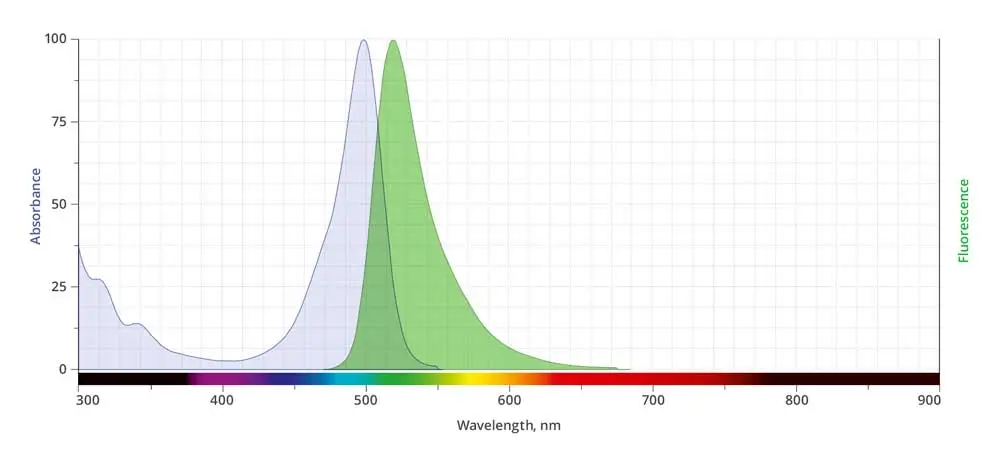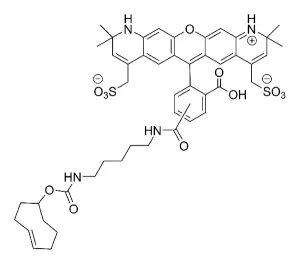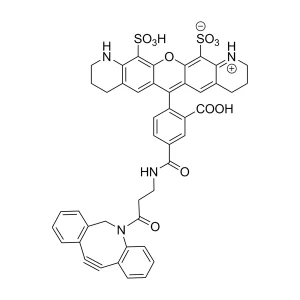Menu
AZDye™ 488 Alkyne is a bright, green-fluorescent alkyne-activated probe routinely used for imaging of low abundance azide-containing biomolecules. AZDye™ 488 Alkyne reacts with azides via a copper-catalyzed click reaction (CuAAC) to form a stable triazole linker. A probe for copper-less azide detection (AZDye™ 488 DBCO) is also available for application where the presence of copper is not acceptable.
AZDye™ 488 is a bright, and highly photostable, green-fluorescent probe optimally excited by the 488 nm laser line. This probe is water-soluble and its fluorescence is pH independent over a wide pH range. The brightness and photostability of blue dyes are best suited to direct imaging of low-abundance targets. AZDye™ 488 is structurally identical to Alexa Fluor® 488 Alkyne. Its absorption/emission spectra is a perfect match to spectra of many other fluorescent dyes based on sulfonated rhodamine 110 core, including DyLight® 488, Alexa Fluor® 488 and CF® 488 Dye.
Alexa Fluor® and DyLight® are registered trademarks of Thermo Fisher Scientific.
| Unit Size | 1 mg, 5 mg, 25 mg |
|---|---|
| Abs/Em Maxima | 494/517 nm |
| Extinction Coefficient | 73,000 |
| Flow Cytometry Laser Line | 488 nm |
| Microscopy Laser Line | 488 nm |
| Spectrally Similar Dyes | FAM, Alexa Fluor® 488, Atto™ 488, CF® 488A Dye, DyLight® 488 |
| Molecular weight | 571.53 (protonated) |
| CAS | N/A |
| Solubility | Water, DMSO, DMF |
| Purity | >95% (HPLC) |
| Appearance | Orange to light red solid |
| Storage Conditions | -20°C. Desiccate |
| Shipping Conditions | Ambient temperature |





Stay in the Loop
Join Our Online Community
The latest news, tips, and product releases delivered conveniently to your inbox.
We’re social scientists! Let’s connect.
Together we breakthroughTM

©Vector Laboratories, Inc. 2023 All Rights Reserved.
How do I Request a Quote?
To request a quote for products: